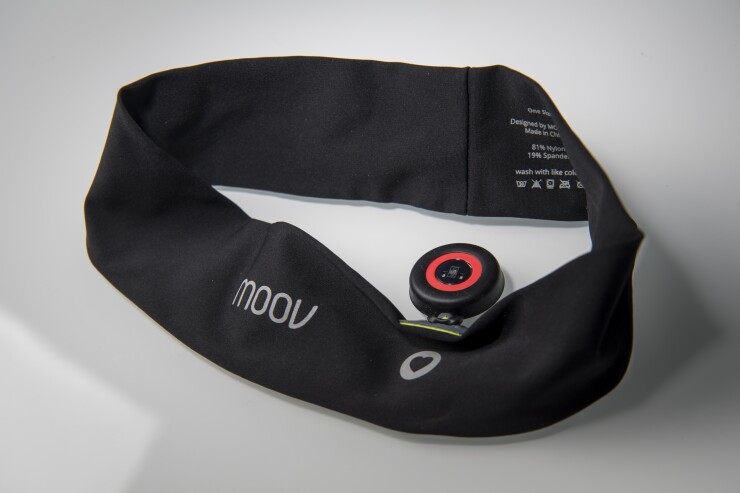The ever-growing list of opportunities to use wearable technology in the insurance industry can sound more like a 1980s infomercial than a key tool to usher the life insurance industry into the digital age. The surface benefits are clear; wearables can serve as:
- A non-invasive underwriting evidence source – gathering metrics to assess risk in less time than a full medical exam.
- A tool to improve in-force management – helping insureds maintain a healthy lifestyle and reduce lapse experience.
- A cnsumer engagement opportunity – providing customer value beyond insurance protection.
- A way to improve mortality experience – reducing the incidence of early deaths from chronic conditions such as diabetes and heart disease.
- A signal to identify super-fit, active people – encouraging life insurance purchase from consumers who feel invincible.
But wait, there’s more! It can also be used for:
- Chronic disease management – helping consumers actively control conditions.
- Earlier identification of diabetes and heart disease – allowing for earlier treatment.
- Improving the obesity epidemic – encouraging physical activity through premium discounts.
Insurers have been interested in understanding more about the potential applications of wearable technology for many years, but the inclusion of wearable technology in life insurance products to date has not matched the interest. But advances in the devices hold great promise to revolutionize the industry.

Is the promise of wearable technology too good to be true? The answer to that question depends on how you measure success. The questions about the effectiveness of wearable technology may be a matter of framing. The infomercial-style perception of wearable technology in a wellness program is destined to disappoint. Rather than thinking of wearable technology as the knife that can both slice a can and a tomato, think of it as a Swiss Army knife: a tool that can do many things and can provide value if applied to the right use-case. Consider the Swiss Army knife scissors – is this a good pair of scissors? Maybe not if you are wanting to wrap a present, but it might be a wonderful tool if you need to snip something on the go. Wearable technology will not provide a one-size-fits-all solution for the life insurance industry, but it might provide a valuable tool to help the insurance industry adapt to varying consumer expectations.
More ubiquitous, more advanced, and more connected
The wearable technology marketplace is expanding. International Data Corporation
Devices currently measure physical activity through step counts, but can also monitor frequency and duration of activity as well as the intensity of effort. Additionally, these devices can measure periods of inactivity, resting heart rate and sleep. These metrics all have the potential to support a life insurance discount because activity, heart health and sleep all contribute to mortality expectations.
Wearable devices also have the potential to expand in ways that could benefit life insurance policy development. Such advances may include the ability to help consumers manage stress as well as other mental health applications. Sweat-sensing developments could help identify conditions such as diabetes, as well as smoking and alcohol use. These capabilities promise to improve the quality of life for users through improved well-being. Smoking-detection capabilities, for example, could go beyond providing underwriting evidence and be used to promote a smoking cessation benefit to participating insurance customers.
Wearable devices offer an additional potential to connect users. This connection can lead to engagement opportunities for insurers to interact with policyholders beyond premium and claim payment touchpoints. The opportunity to connect to consumers is not limited to the health- and fitness-conscious; these devices could also allow users to monitor the safety of older family members living independently in their homes. Extending the time older adults can live independently, in a safe environment, can potentially lead to enhancements in the products offered by the long-term care industry.
As devices become more widely adopted, more capable in functionality, and more fundamental to everyday living, the more the opportunities for inclusion in life insurance product development become a reality.
Making the case
Actuaries are a skeptical group. We need to research. We need to test. Consequently, we need to connect with companies outside of the insurance industry to better understand how to leverage digital health capabilities in life insurance products.
The landscape of mobile health start-ups is vast, as shown in this
Insurance company pilot programs developed in concert with start-ups operating in this space play a role in educating and informing actuaries about the feasibility of including external metrics in life insurance product development.
Are we ready?
Several converging trends have the potential to disrupt the life insurance industry. The largest generation, the baby boomers, is entering retirement age. Concurrently, the millennial generation is now the largest generation in the workforce. In order to remain relevant, life insurers must adapt products to meet the needs of aging baby boomers as well as digital-savvy millennials. Additionally, 70% of the U.S. population is
Data collected from wearable devices may not replace existing evidence collected as part of a fully underwritten policy, but it could provide supplemental evidence to enhance the decision-making in a simplified issue policy. It can also provide continuous underwriting evidence to support future product development. Tools that can enhance an insurer’s ability to shorten the underwriting process are necessary to adapt to consumer expectations for a more digital experience.
Likewise, consumers expect more value from insurance products beyond a death benefit. New products can engage consumers by providing incentives and discounts associated with activity rewards. Additionally, wearable device usage that enables older adults to live independently in their homes benefits the caregiver, concerned family members, as well as the individual at home.
These products can change the nature of the relationship between insurers and consumers from merely transactional to become one of partnership, where both parties are invested in improved well-being.
Improved health is at the heart of all applications of wearable technology in life insurance. Wearable devices have the potential to inform consumer health behavior and thus prevent and identify serious health conditions, such as diabetes and heart disease. This could improve the quality of life of the insurance customer as well as mortality experience for the life insurer. Given the prevalence of obesity-related health conditions, there are tremendous benefits to the life insurance industry from products that encourage activity.
How can life insurers adapt to meet these disparate needs? We can develop relevant products that are tailored to address the needs of distinct consumer groups and supported by wearable technology – a very versatile “gadget” in our tool kit.





